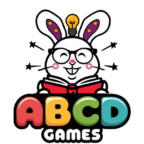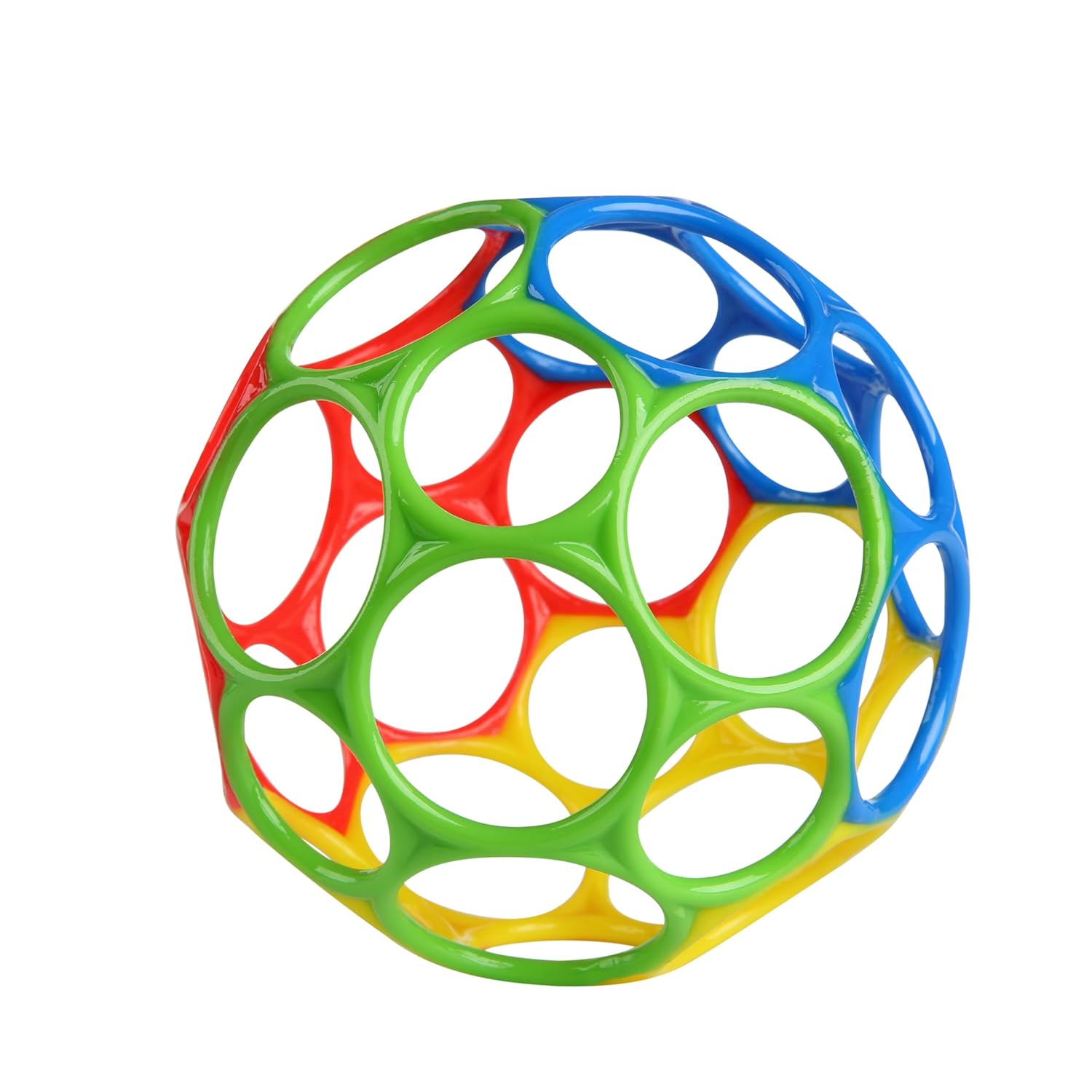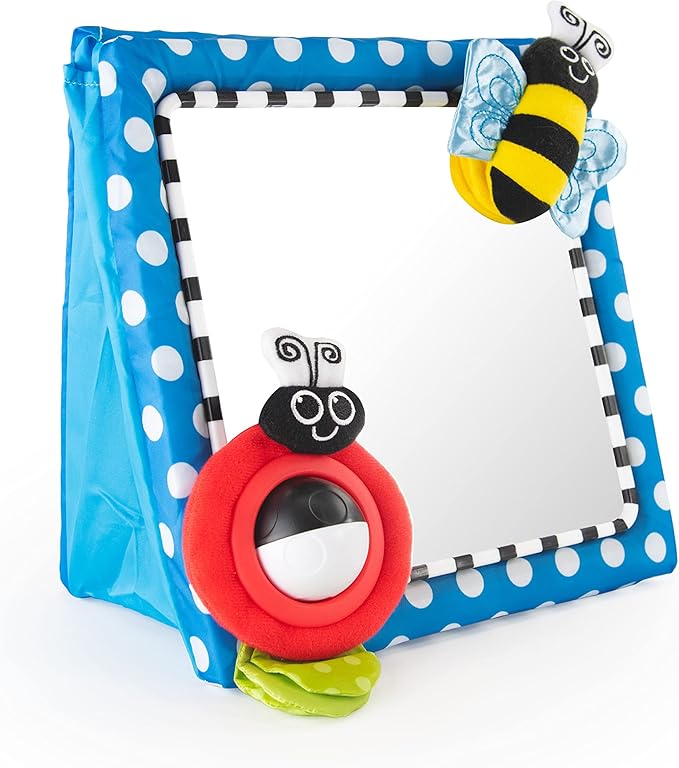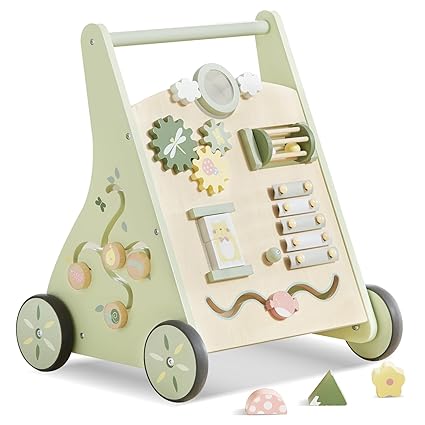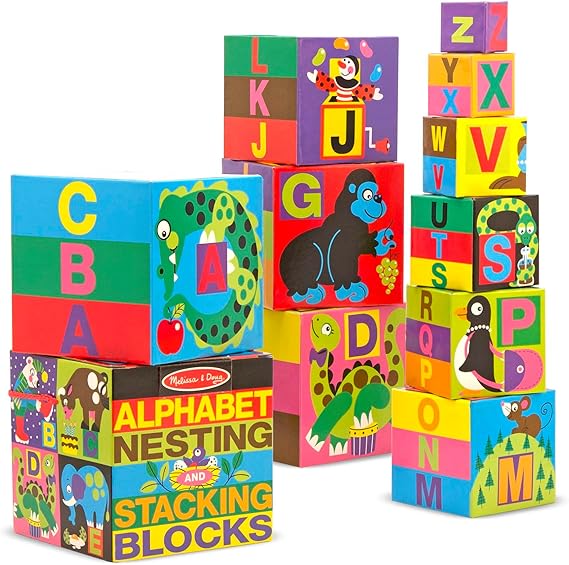Watching a baby grow and change is one of life’s most exciting journeys. Every month brings new milestones, from a newborn’s first smile to their first steps. In this month-by-month guide, we’ll explore the key developmental milestones to expect during your baby’s first year. From motor skills to social interactions, these milestones can help you track and celebrate your child’s progress, while giving insight into their growth and needs. Understanding what to expect each month can provide you with confidence and reassurance, helping you enjoy every stage of your baby’s development.
Here’s a table summarizing the key developmental milestones for babies from 0 to 36 months:
| Age Range | Key milestones | Ideal Weight |
| 0-1 Month | – Turns head toward familiar sounds – Grasps objects reflexively – Begins to lift head during tummy time | 2.5 – 4.5 kg (5.5 – 9.9 lbs) |
| 1-2 Months | – Smiles at people – Coos or gurgles in response – Holds head up briefly when on tummy | 3.4 – 5.5 kg (7.5 – 12.1 lbs) |
| 2-3 Months | – Tracks objects with eyes – Opens and closes hands – Pushes up on arms during tummy time | 4.0 – 6.8 kg (8.8 – 15 lbs) |
| 3-4 Months | – Rolls from tummy to back – Laughs and babbles – Reaches for objects | 5.0 – 7.5 kg (11 – 16.5 lbs) |
| 4-5 Months | – Grasps toys with intent – Rolls in both directions – Responds to their name | 5.5 – 8.5 kg (12 – 18.7 lbs) |
| 5-6 months | – Begins sitting with or without support – Babbles with more complex sounds – Shows interest in solid foods | 6.0 – 9.0 kg (13.2 – 19.8 lbs) |
| 6-7 Months | – Begins scooting or crawling – Transfers objects between hands – Expresses interest in objects around them | 6.5 – 9.5 kg (14.3 – 20.9 lbs) |
| 7-8 Months | – Pulls up to stand – Begins cruising – Looks for hidden objects | 6.8 – 10.0 kg (15 – 22 lbs) |
| 8-9 Months | – Says simple words – Crawls confidently – Understands basic gestures like waving | 7.0 – 10.5 kg (15.4 – 23.1 lbs) |
| 9-10 Months | – Stands alone briefly – Points to objects of interest – Follows simple directions | 7.5 – 11.0 kg (16.5 – 24.2 lbs) |
| 10-11 Months | – Takes first steps with support – Plays interactive games – Understands simple phrases | 8.0 – 11.2 kg (17.6 – 24.7 lbs) |
| 11-12 Months | – Walks with or without help – Says 1-3 words – Imitates sounds and actions | 8.5 – 11.5 kg (18.7 – 25.4 lbs) |
| 13-15 Months | – Walks independently – Points to body parts when asked – Enjoys stacking and sorting objects | 9.0 – 12.0 kg (19.8 – 26.5 lbs) |
| 16-18 Months | – Says 10-20 words – Feeds themselves with hands – Recognizes self in the mirror | 9.5 – 12.5 kg (20.9 – 27.6 lbs) |
| 19-21 Months | – Runs with ease – Begins pretend play – Starts using two-word phrases | 10.0 – 13.0 kg (22 – 28.7 lbs) |
| 22-24 Months | – Uses simple sentences – Follows two-step instructions – Engages in more structured play | 10.5 – 13.5 kg (23.1 – 29.8 lbs) |
| 25-27 Months | – Uses up to 200 words – Solves simple puzzles – Understands simple time concepts | 11.0 – 14.0 kg (24.2 – 30.9 lbs) |
| 28-30 Months | – Jumps with both feet – Identifies basic emotions in others – Begins using “I” and “me” in sentences | 11.5 – 14.5 kg (25.3 – 31.9 lbs) |
| 31-33 Months | – Engages in pretend play with stories – Dresses and undresses with help – Uses full sentences | 12.0 – 15.0 kg (26.5 – 33 lbs) |
| 34-36 Months | – Follows three-step directions – Understands colors and shapes – Shows early empathy and shares | 12.5 – 15.5 kg (27.6 – 34.2 lbs) |
0-12 Months: Your Baby’s First Year-
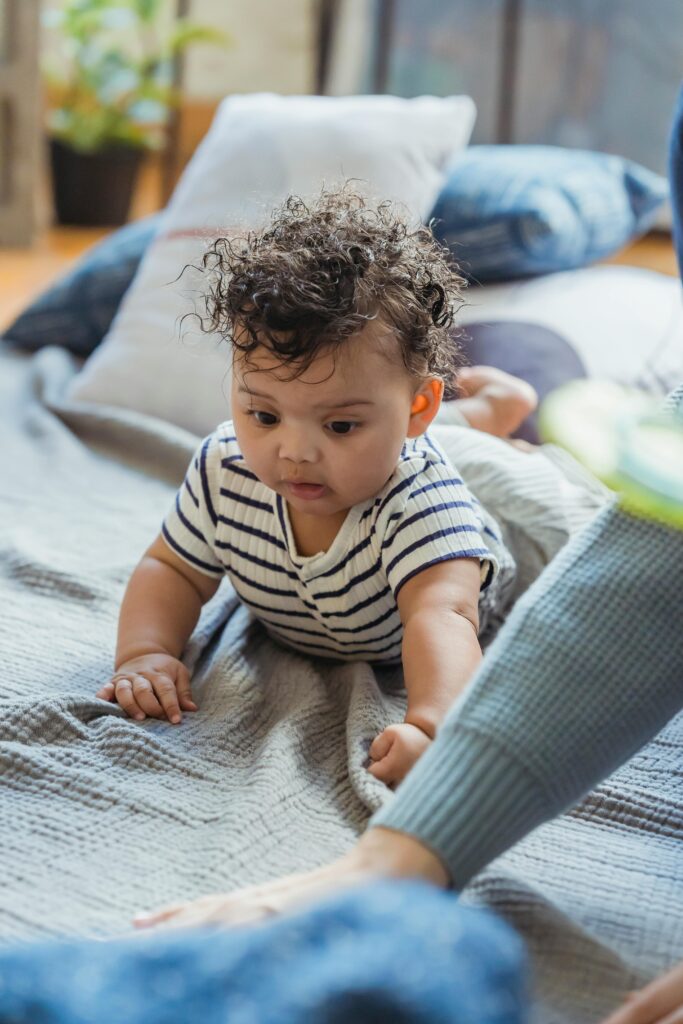
The first year of life is filled with rapid changes and exciting developments. Babies transform from helpless newborns into active little explorers, reaching significant milestones along the way.
Month 1: Newborn Reflexes and Adjustments-
In their first month, newborns begin adjusting to the world outside the womb. They rely heavily on reflexes to respond to stimuli and can recognize familiar voices. Babies love looking at faces, especially up close.
Key Milestones:
- General Skill– Turns head toward familiar sounds: Your baby may turn their head when they hear a familiar voice or sound.
- Motor Skill– 1)Grasps objects reflexively: Reflexive grasping is a common newborn behavior, where they grasp fingers or objects placed in their palms.
2) Begins to lift head during tummy time: During tummy time, your baby may begin to lift their head briefly, strengthening neck and shoulder muscles.
Month 2: Smiles and Cooing-
By two months, babies start smiling socially, responding to familiar faces and sounds. Tummy time continues to play a crucial role in strengthening their muscles, setting the stage for future mobility.
Key Milestones:
- General Skill– Smiles at people: Your baby may smile in response to your face or voice.
- Speech– Coos or gurgles in response: Expect delightful cooing or gurgling sounds as they start to communicate.
- Motor Skill– Holds head up briefly when on tummy: Your baby may lift their head and chest off the ground while lying on their stomach.
Month 3: Visual Tracking and Hand Discovery-
At three months, babies begin to focus on objects and track them with their eyes. They start grasping at things within reach and are fascinated by their own hands.
Key Milestones:
- General Skill– Tracks objects with eyes: Your baby can follow moving objects, such as toys or your finger.
- Motor Skill– 1)Opens and closes hands: They may open and close their hands, discovering their own fingers.
2)Pushes up on arms during tummy time: Your baby may start to push up with their arms, allowing them to look around.
Month 4: Rolling and Laughing-
Four-month-olds are more mobile and may begin rolling from tummy to back. They enjoy laughing and interacting with family members, showing early signs of social engagement.
Key Milestones:
- Motor Skill– 1)Rolls from tummy to back: Many babies start rolling over, showcasing their developing strength.
2)Reaches for objects: They start reaching for and grasping toys and objects within their reach. - Speech– Laughs and babbles: Your baby may giggle or babble in response to interactions.
Month 5: Recognizing and Exploring-
By five months, babies recognize familiar faces and voices. They can transfer toys from hand to hand and enjoy reaching for nearby objects, displaying their growing curiosity.
Key Milestones:
- Motor Skills– 1)Grasps toys with intent: Your baby will start reaching for and holding toys more purposefully.
2)Rolls in both directions: Many babies can now roll over from tummy to back and back again. - General Skill– Responds to their name: Your baby may turn their head or show recognition when you call their name.
Month 6: Sitting and Babbling-
Six-month-olds can often sit with minimal support, and some may sit independently. They may also begin to babble consonant sounds, such as “ma” and “ba,” as their communication skills develop.
Key Milestones:
- Motor Skill– Begins sitting with or without support: Many babies can sit upright with or without assistance.
- Speech– Babbles with more complex sounds: Expect a variety of sounds as your baby practices their vocal skills.
- General Skill– Shows interest in solid foods: Your baby may start reaching for food or showing interest in what you’re eating.
Month 7: Scooting and Exploring Textures-
Around seven months, babies enjoy reaching and exploring different textures. Many start scooting or crawling, expanding their mobility and desire to explore their surroundings.
Key Milestones:
- Motor Skill– 1)Begins scooting or crawling: Your baby may start moving around, either by scooting or crawling on their hands and knees.
2) Transfers objects between hands: They can pass toys from one hand to the other, improving hand-eye coordination. - General Skill– Expresses interest in objects around them: Your baby will show curiosity about toys and objects, reaching out to touch and explore.
Month 8: Standing and Cruising-
At eight months, babies often pull up to stand and may start “cruising” along furniture. They begin to understand object permanence, knowing that things exist even when out of sight.
Key Milestones:
- Motor Skill– 1)Pulls up to stand: Many babies can pull themselves up to a standing position using furniture or your hands.
2) Begins cruising: Your baby may start moving along furniture while holding on for support. - General Skill– Looks for hidden objects: They will search for toys that are hidden or out of sight, showing an understanding of object permanence.
Month 9: First Words and Mimicking Sounds-
Nine-month-olds start imitating sounds and may say simple words like “mama” or “dada.” Their curiosity increases as they explore their environment and interact more with caregivers.
Key Milestones:
- Speech– Says simple words: Some babies may say their first words, often related to parents.
- Motor Skill– Crawls confidently: Your baby becomes more skilled at crawling, exploring their surroundings with confidence.
- General Skill– Understands basic gestures like waving: Your baby may start to understand and respond to gestures like waving goodbye.
Month 10: Improved Balance and Control-
At ten months, babies are honing their balance and may begin to stand independently for short moments. They enjoy pointing or reaching to communicate their interests.
Key Milestones:
- Motor Skill– 1)Stands alone briefly: Many babies can balance on their own for a few seconds.
2)- Points to objects of interest: Your baby may point to things they want or are curious about. - General Skill– Follows simple directions: They may understand and respond to simple commands like “come here.”
Month 11: Taking First Steps-
Many babies take their first steps around eleven months, though it’s normal if they wait a bit longer. They can follow simple instructions and show preferences for toys, indicating their growing independence.
Key Milestones:
- Motor Skill– Takes first steps with support: Your baby may take tentative steps while holding onto your hands or furniture.
- General Skill– 1)Plays interactive games: They enjoy games like peek-a-boo and may engage more in play with caregivers.
2)Understands simple phrases: Your baby begins to comprehend simple phrases and commands.
Month 12: First Birthday and Walking-
By their first birthday, babies may be walking independently or with support. They start using a few words meaningfully and love engaging with family members, showcasing their growing social skills.
Key Milestones:
- Motor Skill– Walks with or without help: Many babies take their first independent steps around this time.
- Speech– 1)Says 1-3 words: They may use words like “mama,” “dada,” or “bye.”
2)Imitates sounds and actions: Your baby enjoys mimicking sounds, gestures, and actions from caregivers.
Here is a list of toys that can help with your baby’s development-
13-24 Months: Toddlers on the Move-

As your child transitions into toddlerhood, they become more mobile and curious, showcasing an array of developmental milestones.
Month 13-15: Early Walkers and Curious Explorers-
Toddlers at this stage begin walking more confidently and may start climbing. They can understand and follow simple commands, indicating their growing cognitive abilities.
Key Milestones:
- Motor Skill– Walks independently: Your toddler becomes more stable and confident in their walking abilities.
- General Skill – 1)Points to body parts when asked: They can identify basic body parts, enhancing communication skills.
2) Enjoys stacking and sorting objects: Your child may start engaging in simple play that involves organizing and stacking toys.
Month 16-18: Vocabulary Growth and Self-Feeding-
During this period, toddlers’ vocabulary expands quickly, and they begin forming short phrases. Many can feed themselves finger foods and show interest in social interactions, emphasizing their developing independence.
Key Milestones:
- Speech– Says 10-20 words: Your toddler may start using simple words and phrases to express their needs.
- Motor Skill– Feeds themselves with hands: They gain independence during mealtime, experimenting with self-feeding.
- General Skill– Recognizes self in the mirror: Your child may show recognition and interest when looking at themselves in mirrors.
Month 19-21: Running and Increased Coordination-
At this stage, toddlers become more coordinated, running and climbing with enthusiasm. They love playing pretend and mimicking adult behaviors, reflecting their growing imagination.
Key Milestones:
- Motor Skill– Runs with ease: Your toddler may show confidence and speed in running.
- General Skill– Begins pretend play: They start engaging in imaginative play, using toys to represent real-life situations.
- Speech– Starts using two-word phrases: Your child may begin to combine words, forming simple sentences like “more juice.”
Month 22-24: Building Independence and Social Skills-
By age two, toddlers strive for independence. They use simple sentences, enjoy playing with other children, and are eager to express their opinions, indicating their social development.
Key Milestones:
- Speech– Uses simple sentences: Your toddler may start stringing words together, using phrases like “want cookie.”
- General Skill– 1)Follows two-step instructions: They can understand and carry out simple instructions involving two steps, such as “pick up the toy and give it to me.”
2)Engages in more structured play: Your child may enjoy participating in games or activities that involve rules or turn-taking.
Here is a list of toys that can help with your baby’s development-
| 1. | Busy Board Montessori Educational Toys |  |
| 2. | TOP BRIGHT Montessori Toys | 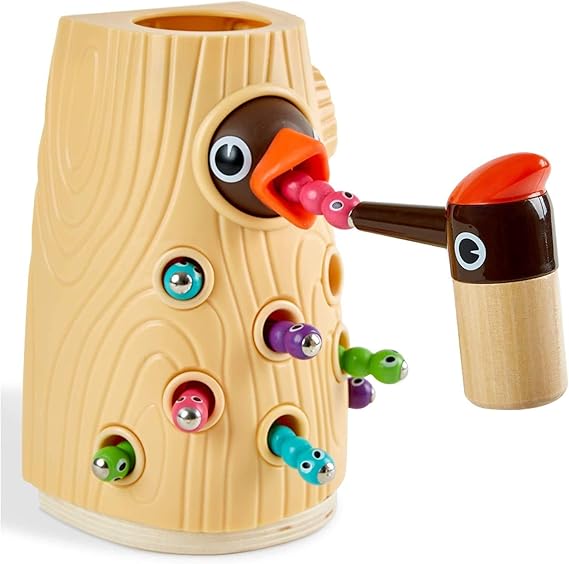 |
| 3. | 3PCS Suction Cup Spinner Toys | 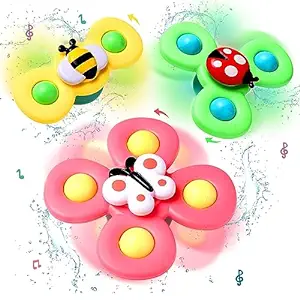 |
| 4. | Joyreal Montessori Busy Board Wooden Sensory Toys | 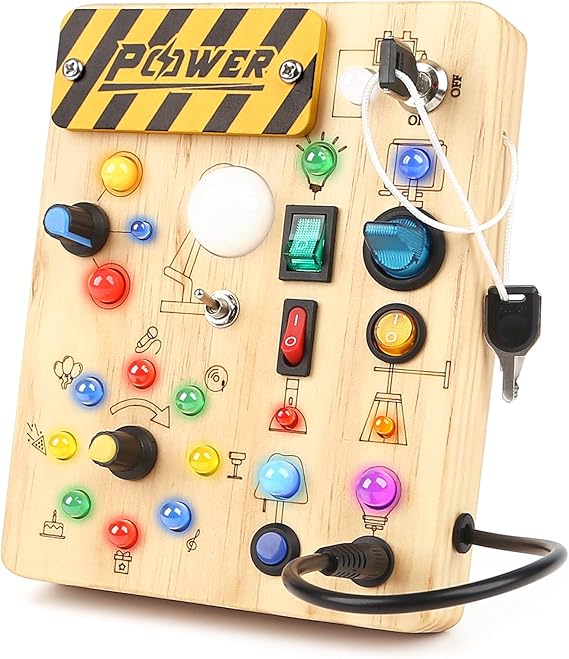 |
25-36 Months: Becoming Little Individuals-

As your child approaches three years old, they develop a greater sense of independence and social awareness, mastering new skills and forming early friendships.
Month 25-27: Advanced Speech and Problem Solving-
Toddlers’ vocabulary explodes, with some using up to 200 words. They start solving puzzles, understand sequences, and engage in more complex play, showcasing their cognitive growth.
Key Milestones:
- Speech– Uses up to 200 words: Your child may have a growing vocabulary, allowing for more complex communication.
- General Skill– 1)Solves simple puzzles: They can manipulate simple puzzles, enhancing their problem-solving skills.
2) Understands simple time concepts, like “soon” or “later”: Your toddler begins to grasp basic concepts of time.
Month 28-30: Enhanced Physical Skills and Emotional Awareness-
Children at this age can jump, throw, and kick with greater control. Emotionally, they start to understand empathy and may offer comfort to others, reflecting their growing social awareness.
Key Milestones:
- Motor Skill– Jumps with both feet: Your toddler may begin to jump confidently, enhancing their physical coordination.
- General Skill– Identifies basic emotions in others: They may recognize and respond to others’ feelings, demonstrating early empathy.
- Speech– Begins using “I” and “me” in sentences: Your child starts to express their identity and needs more clearly.
Month 31-33: Imaginative Play and Independence-
Three-year-olds enjoy imaginative play, creating stories and engaging in role-play. They show a greater sense of independence but still rely on routine for comfort.
Key Milestones:
- General Skill– 1)Engages in pretend play with stories: Your toddler may create elaborate play scenarios and stories with toys.
2)Dresses and undresses with help: They may start to attempt dressing themselves but still require assistance. - Speech– Uses full sentences: Your child can communicate more effectively using complete sentences.
Month 34-36: Problem Solving and Early Friendships-
By three years old, children can follow three-step instructions, understand basic shapes and colors, and build early friendships. They start to grasp concepts of sharing and cooperation.
Key Milestones:
- General Skill– 1)Follows three-step directions: Your child may be able to understand and follow multi-step instructions.
2) Understands colors and shapes: They can identify and name basic colors and shapes.
3) Shows early empathy and shares: Your toddler may begin to share toys or comfort a friend in distress.
Here is a list of toys that can help with your baby’s development-
| 1. | COUOMOXA Soft Building Block for Toddler | 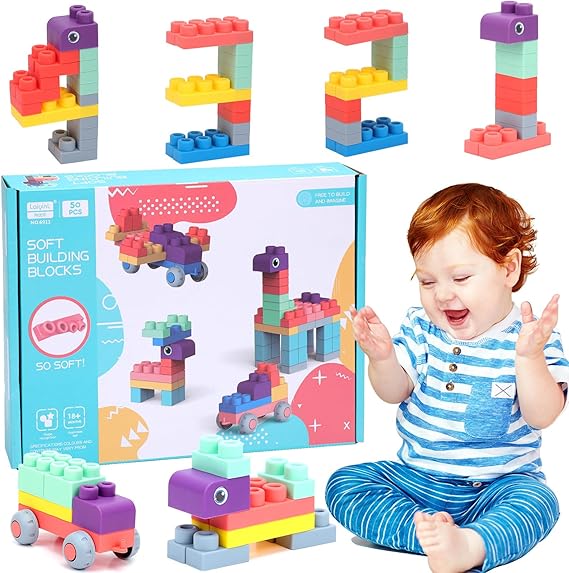 |
| 2. | TOP BRIGHT Educational Learning Number Toys for Toddlers | 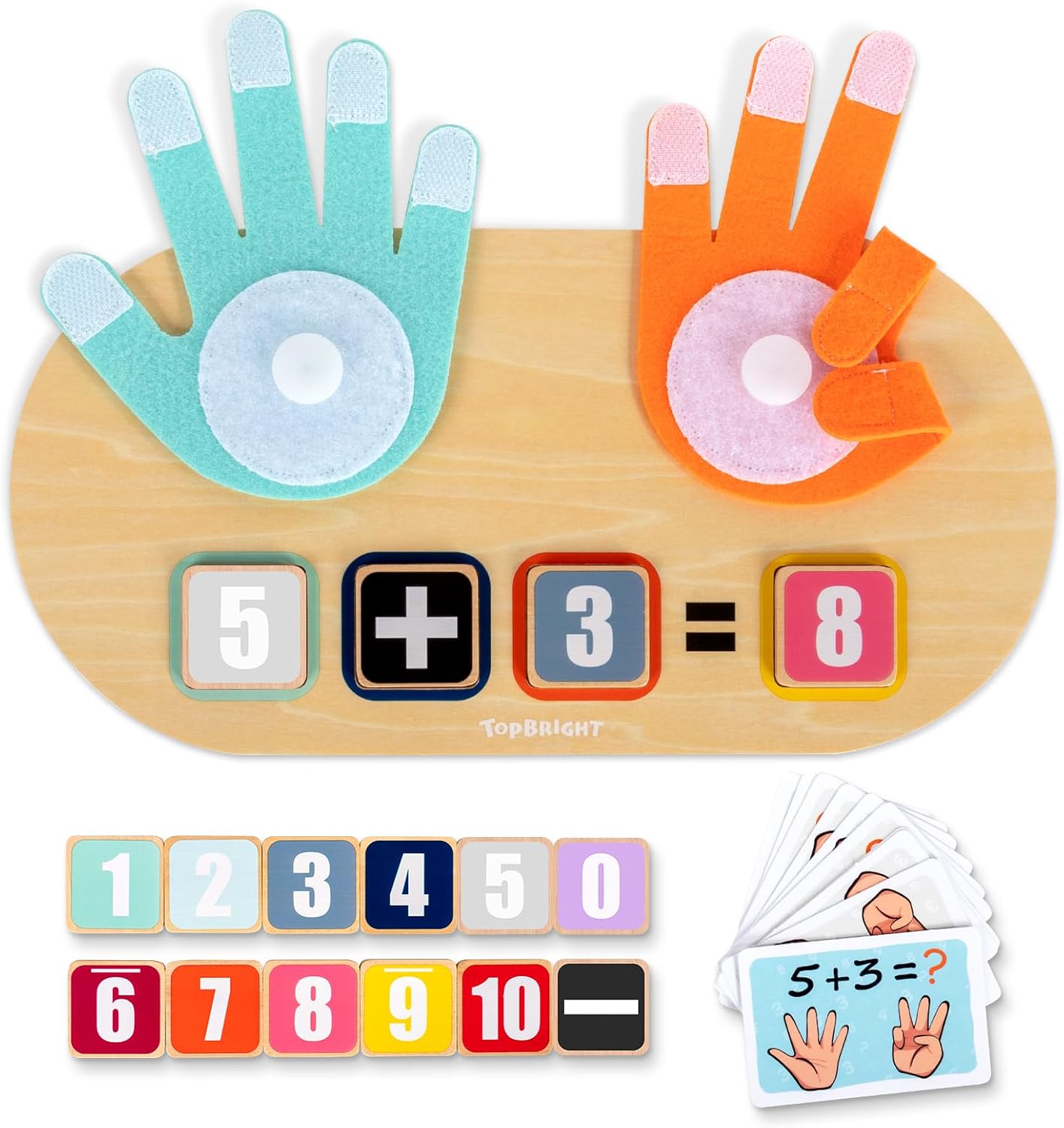 |
| 3. | 101 Dot To Dot Coloring: Fun Activity Book For Children | 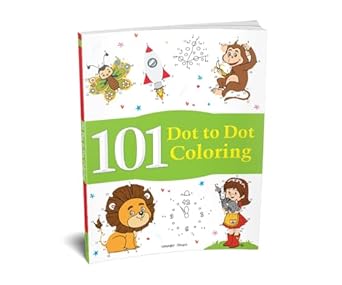 |
| 4. | ORCHARD TOYS Shopping List Game |  |
Supporting Your Child’s Development
While achieving the milestones provide a general timeline for development, it’s important to remember that each child grows at their own pace. Reaching milestones may vary widely among children. Here are some tips for supporting your child’s growth and development:
1. Encourage Play: Play is crucial for a child’s development. Engage in play that promotes fine and gross motor skills, cognitive skills, and social interaction. Activities like stacking blocks, playing catch, or reading together can enhance their development.
2. Provide a Safe Environment: Create a safe space for your child to explore. Remove hazards and allow them to move freely, enabling them to practice new skills without fear.
3. Be Responsive: Respond to your child’s needs and interests. Engage in conversations, provide encouragement, and celebrate their achievements, no matter how small.
4. Foster Social Interaction: Arrange playdates or group activities to help your child develop social skills. Interaction with peers allows children to practice sharing, cooperation, and empathy.
5. Read Together: Reading is one of the best ways to support language development. Incorporate books into your daily routine, and discuss the stories and illustrations to foster comprehension and vocabulary growth.
6. Encourage Independence: Allow your child to make choices and complete tasks independently, such as dressing themselves or helping with simple chores. This builds confidence and self-esteem.
7. Maintain Routine: Establishing a consistent daily routine provides security for your child. Routines help children understand what to expect, aiding in their emotional and social development.
8. Monitor Progress: Keep track of your child’s development and milestones. If you have concerns about their growth or behavior, consult your pediatrician or a child development specialist for guidance.
FAQs on Baby Milestones-
1. What are developmental milestones, and why are they important?
Developmental milestones are specific skills or behaviors that most children can achieve by a certain age. They are important because they help parents and caregivers track a child’s growth and development, providing insight into their physical, social, emotional, and cognitive progress.
2. What should I do if my baby is not meeting milestones?
If you have concerns about your baby’s development, it’s essential to consult your pediatrician. They can assess your child’s progress, offer guidance, and, if necessary, recommend early intervention services to support your child’s development.
3. What are some key physical milestones for babies in their first year?
Key physical milestones in the first year include:
– Lifting their head during tummy time (1 month)
– Rolling over (4-6 months)
– Sitting without support (6-8 months)
– Crawling or scooting (7-10 months)
– Walking independently or with assistance (11-12 months)
4. How can I support my child’s language development during the early years?
You can support your child’s language development by regularly reading to them, talking to them throughout the day, singing songs, and encouraging them to mimic sounds. Engaging in interactive play also promotes language skills and communication.
5. Are milestones the same for every child?
No, milestones can vary widely among children. While there are general age ranges for milestones, each child develops at their own pace, and individual differences are normal. Some children may excel in certain areas while taking longer in others.
Conclusion-
The journey of watching your child grow from a newborn to a toddler is filled with joy, challenges, and countless milestones. Each stage brings new discoveries and learning opportunities, allowing you to bond with your child in unique ways. By understanding and celebrating these milestones, you can enhance your child’s development, ensuring they thrive in their early years.
Every child is unique, and while some may reach milestones ahead of schedule, others may take a bit longer. What matters most is providing a loving, supportive environment where they feel safe to explore, learn, and grow. Enjoy every precious moment, knowing that you’re witnessing the remarkable growth and discovery of a unique little person!
For guidance on what your baby should eat, please take a look at our blog – Age-Specific Nutritional Foods for Babies: A Growth-Focused Feeding Plan.
